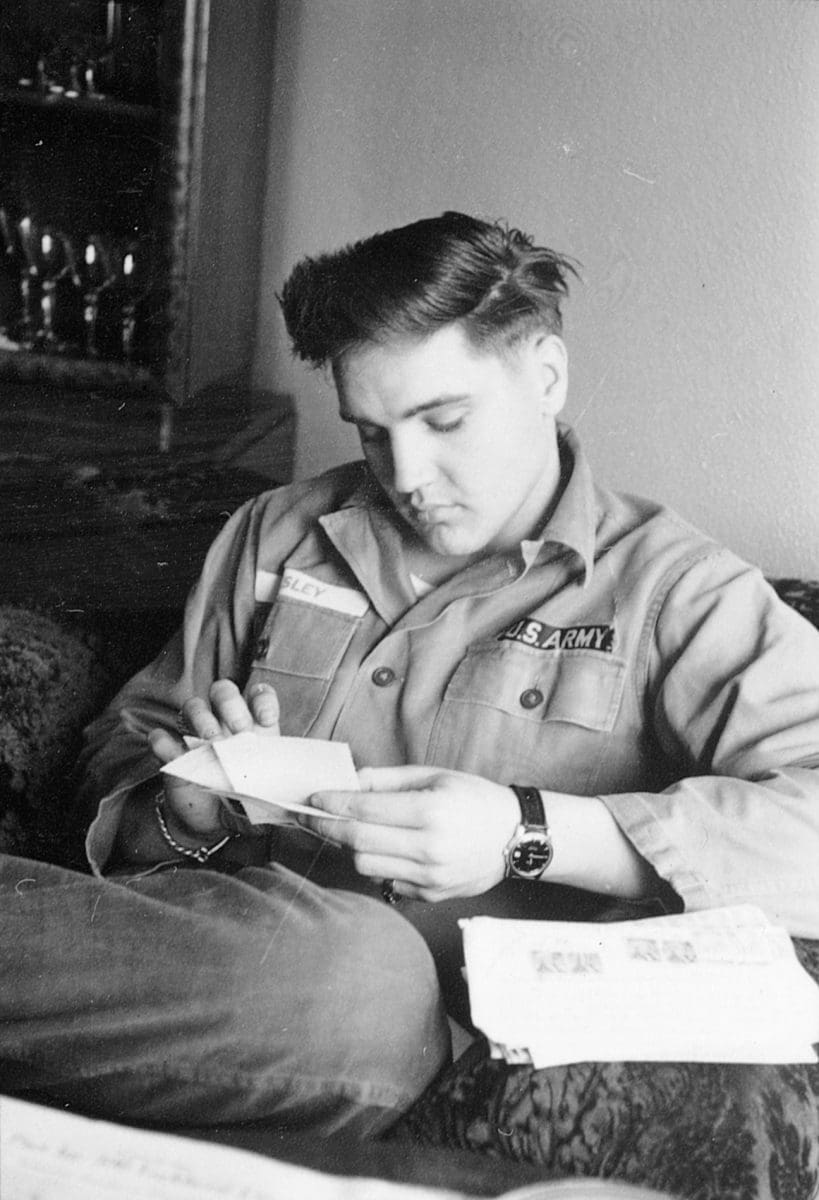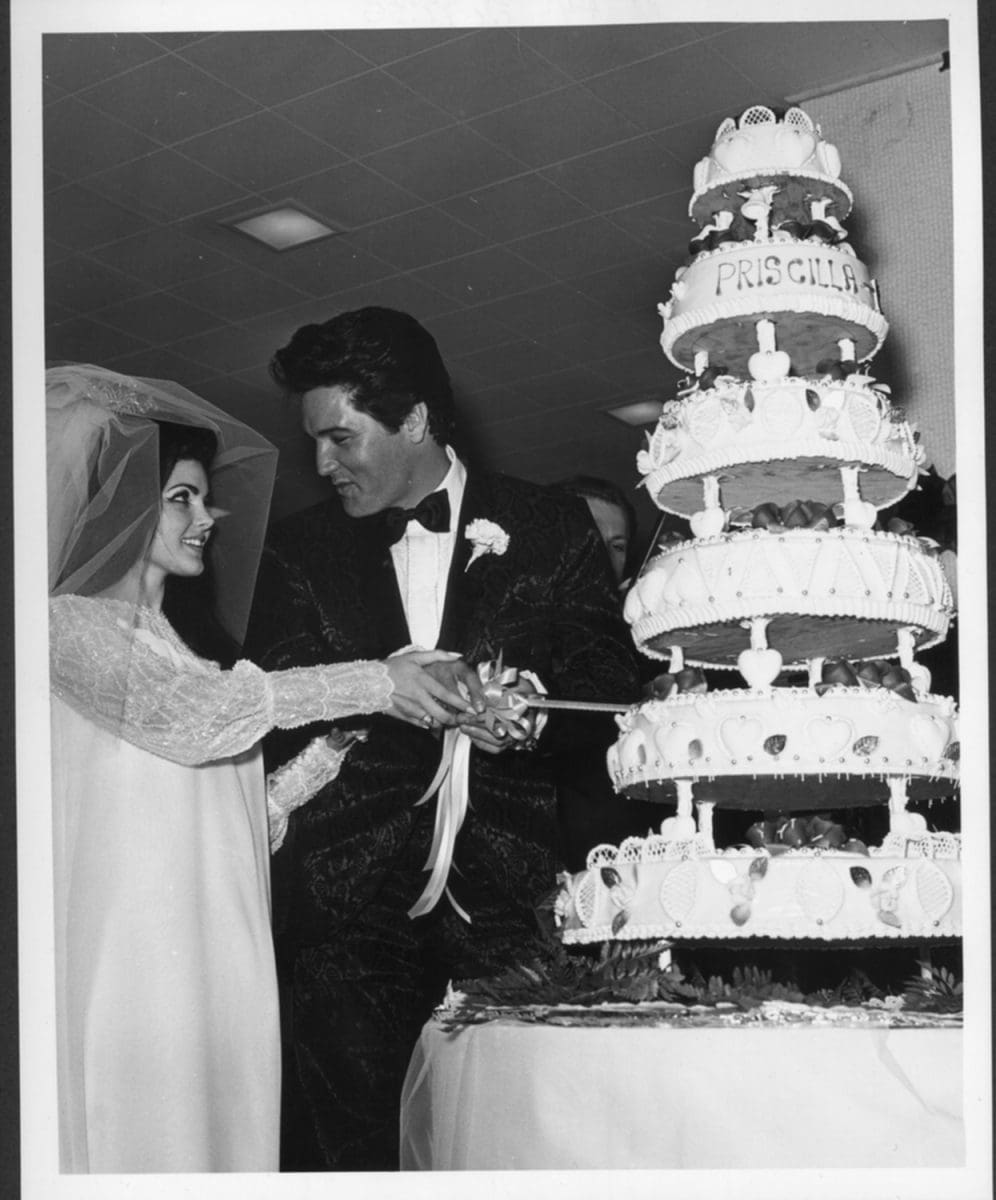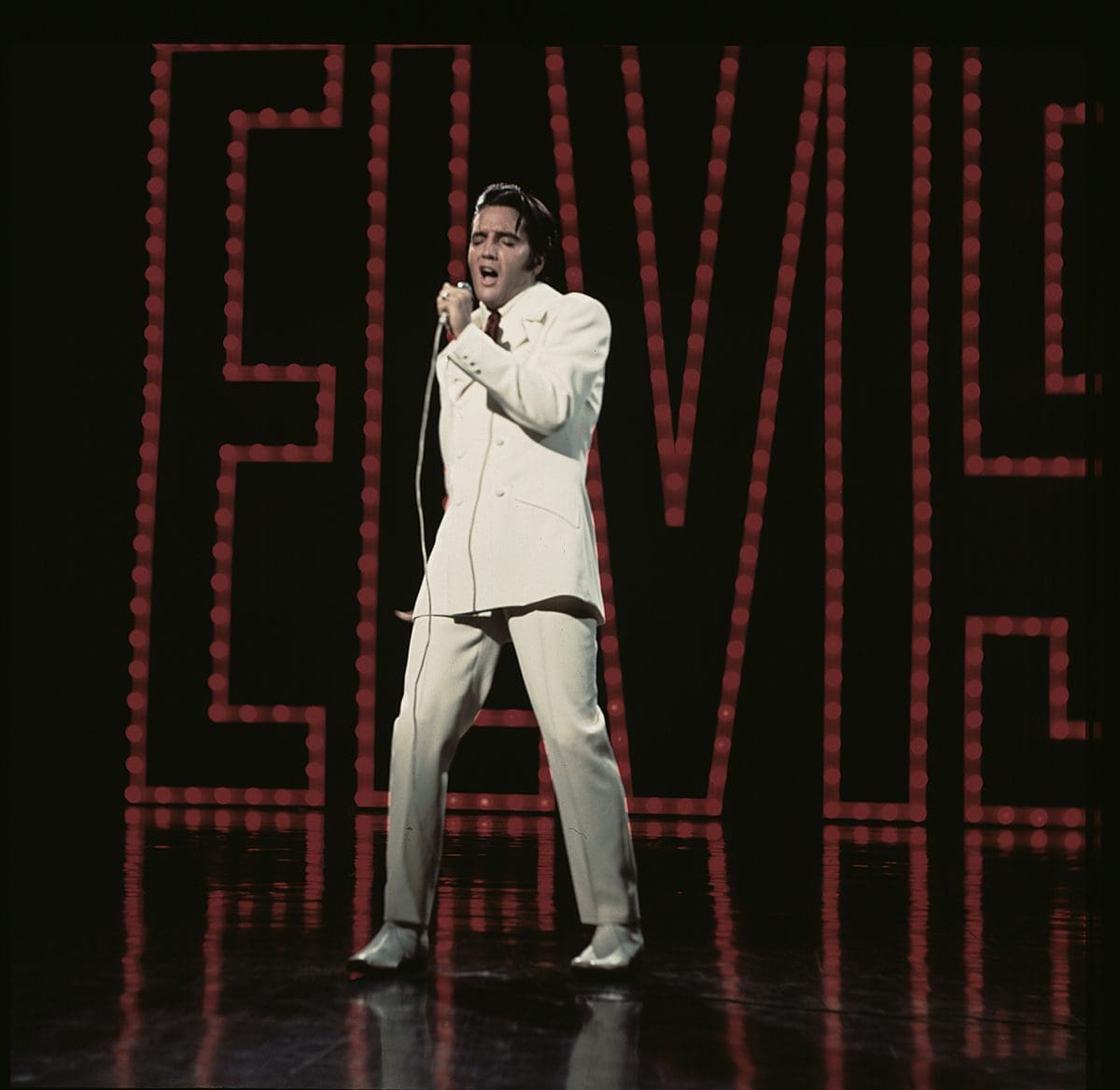
Piercing the veil
A new exhibition at Buxton Contemporary finds a rich complexity in the shadowy terrain between life and death.

Elvis Presley strolls the grounds of his Graceland estate, 1957. Photo by Michael Ochs © EPE. Graceland and its marks are trademarks of EPE. All Rights Reserved. Elvis Presley™ © 2021.

Elvis Presley during his U.S. Army Service, 1958-1960. © EPE. Graceland and its marks are trademarks of EPE. All Rights Reserved. Elvis Presley™ © 2021.

Elvis and Priscilla Presley cutting their wedding cake, at the Aladdin Hotel in Las Vegas, 1 May 1967. © EPE. Graceland and its marks are trademarks of EPE. All Rights Reserved. Elvis Presley™ © 2021.

Elvis Presley in the 1968 NBC television special, Singer Presents… Elvis, later known as the ‘Comeback Special’. Photograph: Fathom Events/CinEvents © EPE. Graceland and its marks are trademarks of EPE. All Rights Reserved. Elvis Presley™ © 2021.
Theologians have a fancy word or it: acheiropoeitos. Or “made without hand”. It refers to those religious icons that supposedly exist without human intervention, that just are the things they are meant to represent.
The most famous example is the Shroud of Turin, now housed in a cathedral in the Italian city of Turin, which is said to be an image of Christ formed when he was wrapped in a burial shroud immediately after being taken down from the cross. Now on a piece of cloth we miraculously have Christ—not one of the thousands of paintings of him made by artists but an actual pressing of his face, in touch with the man himself.
It’s been proven by carbon dating that the cloth dates from the Middle Ages, but no one believes that. The Shroud is still venerated: in 2013 it was taken out of the chapel in which it is usually held and livestreamed, where it drew an audience of millions.
And if this seems irrelevant in what’s called a ‘post-religious’ society, have a look at Ash Barty throwing her wristbands into the crowd after a match at the Australian Open and the people clamouring. Those wristbands are her and the proof that you were once in her divine presence. Or think that every time a friend shares a photo of a sunrise over a beach to Instagram, it’s not just a photo but—this is the miraculous power of photos, which are also not made by hand—proof that they were actually there where they said, and want to make you feel there too.
All of this is some way of explaining the peculiar pleasure—and perversity—of Bendigo Art Gallery’s Elvis: Direct from Graceland. It’s an exhibition of some 300 items from the estate of Elvis Presley, which are usually housed in the family home of Graceland, Memphis, Tennessee, but have for a moment been let out from their final resting place.

Thus we will have the obvious, musical-history- important costumes, both the early rockabilly leather jackets and later rhinestone-encrusted jumpsuits. We’ll have the guitars that Elvis as often as not didn’t play but let dangle suggestively between his legs as he danced. We’ll have the diamond-studded Maltese Cross designed for him by his late-in-life lover Linda Thompson. But we’ll also have— maybe as a reminder of the excess that eventually killed him—his red MG sports car, his Harley Davidson and even his gold-plated telephone. And we’ll even have—this perhaps a sign of the innocence that was lost—his first-grade school crayon box and the hymn book he took to church each week.
Then there are the photos: Elvis as a boy, Elvis with his parents, Elvis in the Army, Elvis getting married, Elvis playing Vegas. Of course, Elvis is one of the most beautiful and iconic human beings of the 20th century. But as Andy Warhol—a thoroughly religious artist: there is a great show on the topic currently on at the Brooklyn Museum—made clear in his silk-screens, you need only a smattering of his features (the curve of his lips, the tilt of his hips, the pomp of his pompadour) and you have him, he is there before you.
Elvis is not called The King for nothing. He≈cannot be explained, he does not need to be justified. He simply comes out of nowhere in the same way as a king’s legitimacy cannot be questioned. Look for a moment at one of the extraordinary photos, sure to be in the show, of the young Elvis with his parents Vernon and Gladys. Nothing can possibly account for how they in their absolute ordinariness produced someone like him. It’s as though God came down from the heavens and decided for some reason to manifest himself in Tupelo, Mississippi, on 8 January 1935.
We will go to see the show at Bendigo because all of those objects were once in the presence of Elvis. They all touched or were touched by him and therefore in a way are him. Beyond any social history they might relate—the story of a small-town boy swallowed up by celebrity culture who lost his way—there is simply Elvis, who rises over any such tragic figure, like Christ resurrected after his death.
Elvis has already outlived his time, his circumstances, those earlier lamentations of his selling out and even his ironic reclamation as kitsch icon. He will simply now live on forever. And he has left his relics behind for us to venerate. Go see the show on a Sunday, early in the morning, with the church bells of Bendigo ringing in the background. Then hum Elvis’s ‘In the Ghetto’, his brilliantly updated version of the birth of Christ. No one “made” Elvis. He just is, there before us, acheiropoeitos.
Elvis: Direct From Graceland
Bendigo Art Gallery
19 March—17 July
This article was originally published in the March/April 2022 print edition of Art Guide Australia.